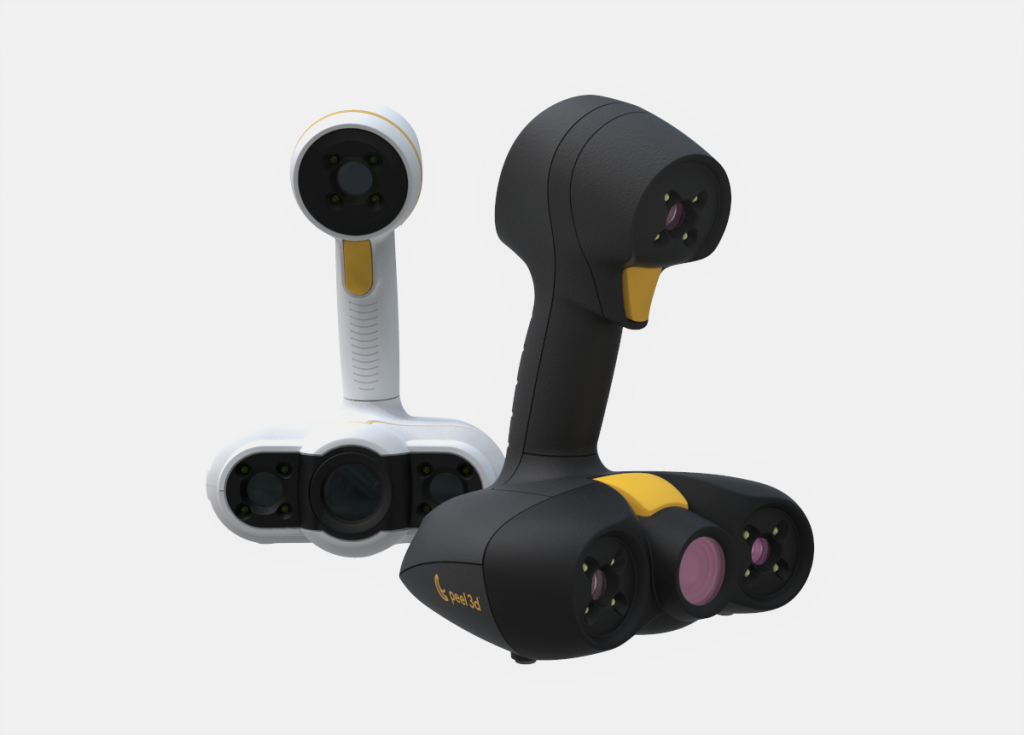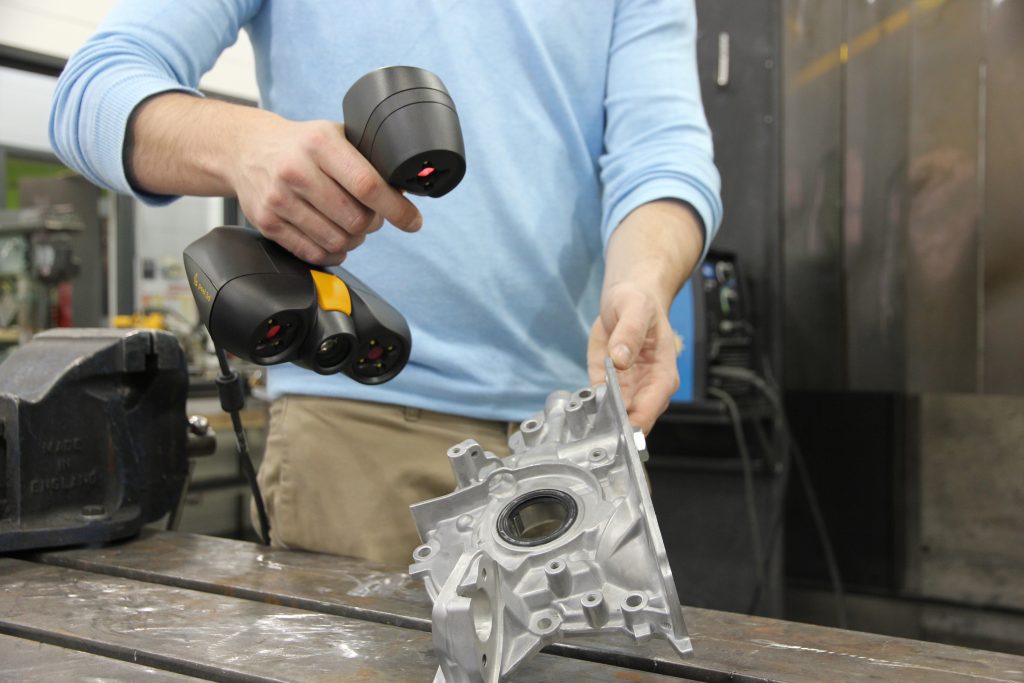3D scanner manufacturer peel 3d has announced the launch of two new handheld 3D scanners.
The peel 2-S and the higher-performance peel 2 CAD-S are both based on the company’s previously released peel 2 scanner, but come complete with a number of feature upgrades that make them more suitable for small part scanning. Once again powered by metrology specialist Creaform and electronics provider AMETEK, the 2-S range is primarily aimed at artists, designers, and engineers seeking affordability in their day-to-day scanning projects.
François Leclerc, head of the peel 3d initiative, states, “Many of our customers around the globe were asking us for a professional-grade and cost-effective 3D scanner that could tackle trickier small parts and intricate parts. This new solution, which is joined by the CAD model for reverse engineering applications, is the perfect complement to peel 2. peel 3d now covers the entire spectrum of part sizes, which is an important advantage for our customer base.”

Affordable 3D scanning with peel 3d
With the launch of the peel 2-S range, the company’s affordable portfolio grows once again. Launched back in October of 2017, the original peel 1 enabled the company to debut its structured white light scanning technology. Priced at $5,990, the device makes for a great no-nonsense entry into professional 3D scanning.
The peel 2, on the other hand, is an evolution of the peel 1 with improved tracking, better geometric capabilities, and enhanced color capturing technology. Priced at $7,890, the system is aimed at both newcomers and experienced experts alike, and is intended as an alternative to the pricier industrial devices retailing at $15,000+. The peel 2 features three individual cameras, three sets of LED arrays, and an additional white light projector to deliver full-color, textured 3D scans.

The peel 2-S and peel 2 CAD-S
The new scanners operate on the same eye-safe white light LED technology that powered their predecessors. Now with a smaller field of view, the 2-S range provides users with an impressive resolution of up to 0.1mm and a volumetric accuracy of 0.3mm/m. As such, the devices are designed to work well with small and highly intricate components (0.05 – 0.5m) made of a wide variety of materials, including metal castings, polymers, and clay-based ceramics.
While also suitable for human scans, the new systems may struggle with hair and fur, and often don’t capture translucent, pitch black, or mirrored surfaces in their entirety. When it comes to scanning larger and flatter objects, users can make use of the 1000x positioning targets that are included in the box for improved tracking.
For those that are more interested in hardcore reverse engineering projects, the peel 2 CAD-S may be a better fit. Intended as a ‘pro version’, the CAD-S is fully compatible with most engineering CAD softwares available today, and enables users to export scans directly to various 3D environments without first going through a third-party conversion program. By streamlining this preprocessing stage, the scanner allows users to spend more of their valuable time on the work that actually matters.

Technical specifications and pricing
Below are the technical specifications for the peel 2-S and peel 2 CAD-S. The peel 2-S is priced at $7,890 while the peel 2 CAD-S is offered at a premium of $9,890. Both systems are available to order now on the peel 3D store page.
| Recommended part size | 0.05 – 0.5m |
| Accuracy | Up to 0.1mm |
| Mesh resolution | 0.1mm |
| Measurement rate | 550,000 scans/s |
| Volumetric accuracy | 0.3mm/m |
| Scanning area | 143 x 108mm |
| Stand-off distance | 380mm |
| Depth of field | 100mm |
| Light source | White LED |
| Texture resolution | 50 to 250 DPI |
| Device Dimensions | 154 x 178 x 235mm |
Subscribe to the 3D Printing Industry newsletter for the latest news in additive manufacturing. You can also stay connected by following us on Twitter and liking us on Facebook.
Looking for a career in additive manufacturing? Visit 3D Printing Jobs for a selection of roles in the industry.
Featured image shows the peel 2 CAD-S scanning a casted metal part. Photo via peel 3d.



